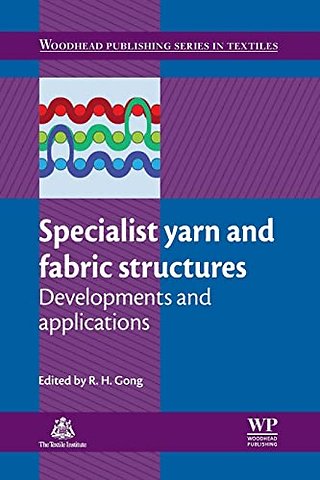Specialist Yarn and Fabric Structures
Developments and Applications
Samenvatting
Specialist yarn, woven and fabric structures are key elements in the manufacturing process of many different types of textiles with a variety of applications. This book explores a number of different specialist structures, discussing the developments in technology and manufacturing processes that have taken place in recent years.
With its distinguished editor and international team of contributors, Specialist yarn, woven and fabric structures is essential reading for all textile researchers, technicians, engineers and technologies, and will also be suitable for academic purposes.
